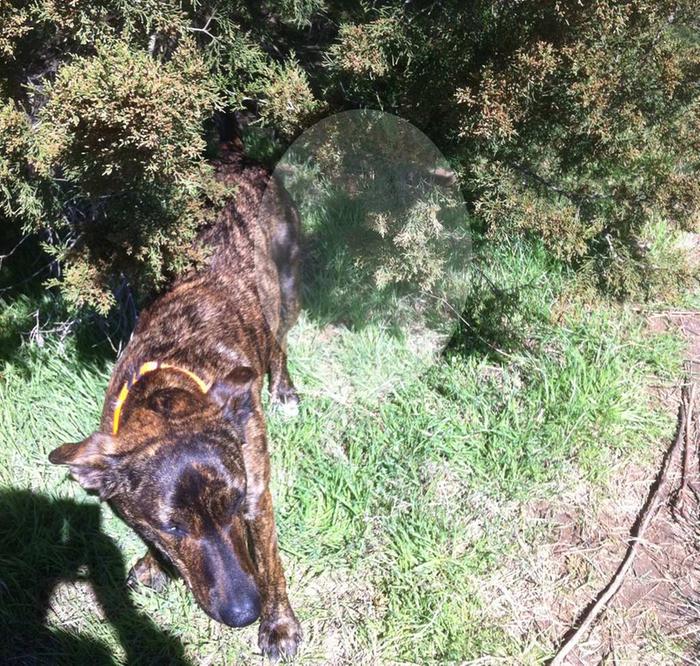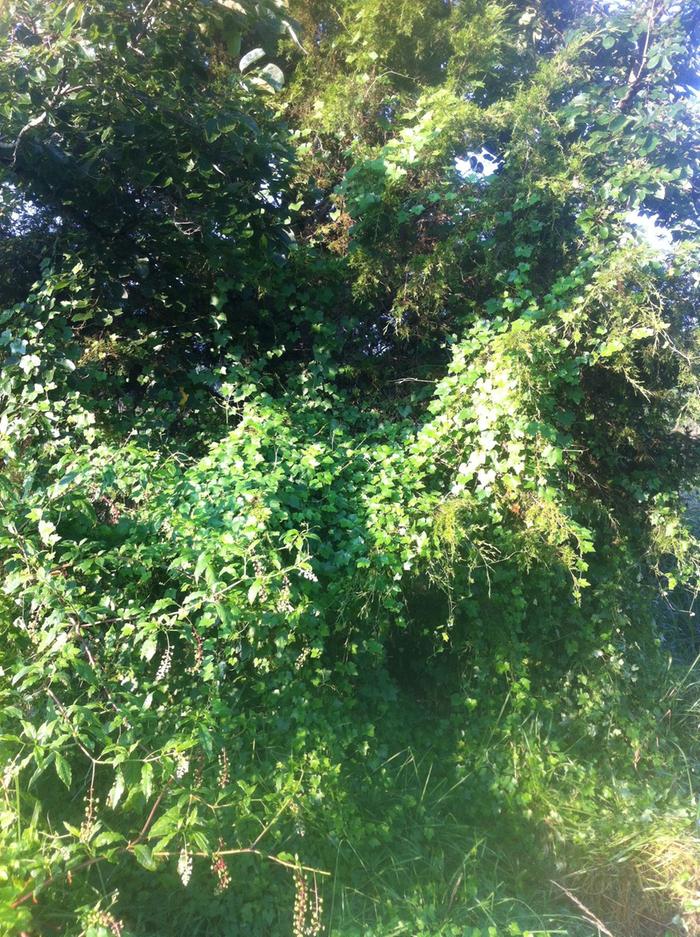posted 10 years ago
hau, Ferne and Dan,
Here's some interesting information on Juniperus Virginiana, also known as the sacred cedar (red heart wood stands for blood, white sap wood stands for flesh).
General: Cypress Family (Cupressaceae). Red cedar (Juniperus Virginiana) is a medium-sized dioecious or rarely monoecious tree from 10-20 m (33-66') tall (McGregor et al. 1986, Stephens 1973).
The evergreen tree is shaped like a pyramid or column, with reddish-brown to grayish colored bark that is fibrous and shedding.
Branches are usually reddish- brown. Leave are opposite, simple, green or blue- green, closely appressed and overlapping the leaf above, scale-like, and 0.2-0.3 cm (1/16-1/8”) long or needlelike and 0.6-1.2 cm (1/4-1/2”) long.
Male and female cones are on separate trees.
The staminate (male) cones are yellowish-brown, papery, solitary at the tips of branchlets, ovoid to ellipsoid, and 0.2-0.4 cm (1/16-1/8”) long.
The ovulate (female) cones are solitary at the tips of branchlets, dark blue or bluish- purple, waxy and berrylike, 0.4-0.7 cm (3/16-1/4”) long.
The female cones ripen from September through October. There are 1-3 seeds per cone.
Red cedar seeds are yellow-brown and round, 2-4 mm in diameter, ridged near the base, and sometimes shallowly pitted.
Foliage: Scale-like except awl-like when young; evergreen
Height: About 40 feet
Spread: About 15 feet
Shape: Typically narrow conical tree but ranges from conical to columnar (column-like)
Main features:
Eastern red cedar is widely distributed throughout the eastern US. It is a pioneer species in that is quickly populates farm fields and other open areas (seeds spread in bird droppings). Its common place presence throughout makes it suffer the stigma of being too familiar. However, this species certainly has a place in our landscapes since there are cultivars that have dark green foliage, showy “fruit”, and a variety of forms (see Additional Information section). It is also tolerant of poor dry soils as well as alkaline soils.
Plant Needs:
Zone: 3 to 9
Light: Full sun
Moisture: Average to dry
Soil type: Any type except poorly drained
pH range: Acid to somewhat alkaline
Function
Eastern red cedar has numerous landscape functions including specimen plant, in mass, as a hedge and windscreen, in a border, and as foundation plant (shrub forms).
Care:
No special care is needed. This species is very tolerant of pruning (do not cut into wood without foliage).
Additional Information:
Eastern red cedars, like all junipers are dioecious which means that there are separate male and female plants. The silver-gray cones (fleshy coverings on seeds often referred to as juniper “berries) on females are quite attractive in the fall and winter. Male plants can be distinguished from female plants in the late winter because male cones (which bear pollen) are brown and are borne at branch tips giving male plants an overall brownish appearance in late winter. Eastern red cedar is a misnomer since this species is a juniper and not a true cedar; cedars are in the Cedrus genus.
This species is not known to be allelopathic. It is however quick to spread over an area.
So there you go Dan, your theory is correct.
The trees do suck up a lot of water (as do most conifers) and this, along with the shading via the low to the ground growing branches, usually creates a "dead zone" under the trees.
Just about anything you plant, provided you trim up the lower branches to allow light to hit the ground, will grow around these trees.
If you decide to burn them, all I ask is that you be respectful and offer up prayers to Wakan Tanka.
We burn this wood as incense, to cleanse the area of bad spirits and to take our prayers to the Creator of all things.
There are documented cases where spirits have prevented the wood to burn because it was not done with the spirits in thought.
Ferne, I would remove small diameter trees, this will open up areas for you to plant. Do remove any dead branches, they suck life out of the living tree.
The dead branches make a great chipped mulch or if large enough (1.5" dia. and larger) a siyotanka can be crafted from them. * Siyotanka is the Native American Flute *
Pilamayaye, Luta Cetan

 1
1

















 1
1























 I think I'll end up running a bunch of it through the chipper. Mulch and bedding are always good things.
I think I'll end up running a bunch of it through the chipper. Mulch and bedding are always good things.

































 I hadn't really thought about intentionally planting for them, though. It probably won't happen this year, but I will put it on the list for next spring.
I hadn't really thought about intentionally planting for them, though. It probably won't happen this year, but I will put it on the list for next spring.




